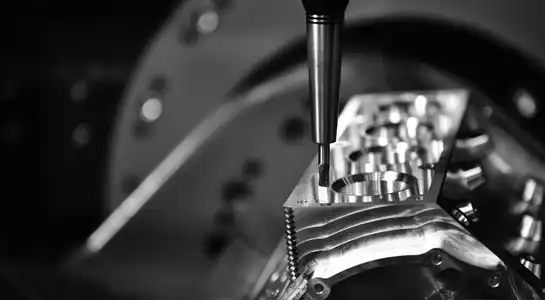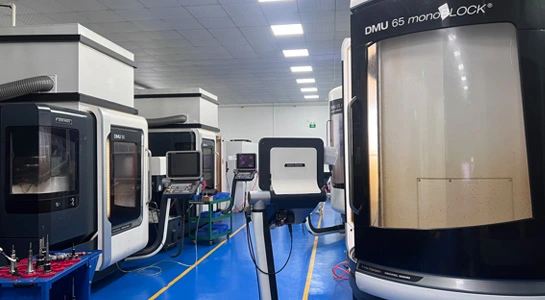Advanced Technologies in Mechanical Part Prototyping
3D Printing Revolution
3D printing has revolutionized the world of mechanical part prototyping. This additive manufacturing technique allows for the creation of complex geometries that would be difficult or impossible to achieve with traditional manufacturing methods. Here are some key advantages of 3D printing in prototyping:
- Rapid iteration: 3D printing enables quick production of multiple design iterations, allowing for faster design refinement.
- Cost-effective: For small batch productions, 3D printing can be more economical than traditional manufacturing methods.
- Material versatility: Modern 3D printers can work with a wide range of materials, including plastics, metals, and even composites.
When considering 3D printing for mechanical part prototyping, it's essential to choose the right technology based on your specific needs. For instance, Fused Deposition Modeling (FDM) is excellent for quick, low-cost prototypes, while Stereolithography (SLA) offers higher precision and smoother surface finishes.
CNC Machining Precision
Computer Numerical Control (CNC) machining remains a cornerstone of mechanical part prototyping, especially when high precision and material-specific properties are required. CNC machining offers several benefits for prototyping:
- Accuracy: CNC machines can achieve tight tolerances, making them ideal for parts that require precise dimensions.
- Material range: CNC machining can work with a vast array of materials, including metals, plastics, and wood.
- Scalability: The same CNC programs used for prototyping can often be scaled up for production runs.
To maximize the effectiveness of CNC machining in prototyping, consider design for manufacturability (DFM) principles. This approach ensures that your prototype designs are optimized for the CNC process, reducing production time and costs.
Injection Molding for Functional Prototypes
While often associated with mass production, injection molding can also be a valuable tool for creating functional prototypes. Rapid injection molding techniques have made this process more accessible for prototyping purposes. Here's why injection molding can be beneficial for mechanical part prototyping:
- Material properties: Injection molded prototypes have properties very close to the final product, allowing for more accurate testing.
- Surface finish: This method produces parts with excellent surface finishes, which can be crucial for certain applications.
- Production-ready design: Prototyping with injection molding can help identify and resolve potential issues before full-scale production.
When using injection molding for prototyping, consider using aluminum molds instead of steel. Aluminum molds are less expensive and can be produced more quickly, making them ideal for prototype runs.
Material Selection and Testing in Prototyping
Choosing the Right Materials
Selecting the appropriate materials for mechanical part prototyping is crucial for accurately representing the final product's properties and performance. Consider the following factors when choosing materials:
- Mechanical properties: Strength, stiffness, and durability should match the intended final product.
- Thermal characteristics: If the part will be exposed to temperature extremes, choose materials that can withstand these conditions.
- Chemical resistance: For parts that will be exposed to chemicals or harsh environments, select materials with appropriate resistance properties.
It's often beneficial to prototype with multiple materials to compare performance and characteristics. This approach can help identify the optimal material for the final product while also providing valuable data for design refinement.
Material Testing and Analysis
Once you've selected potential materials for your mechanical part prototyping, conducting thorough testing and analysis is essential. This process helps validate material properties and ensures the prototype will perform as expected. Key testing procedures include:
- Tensile testing: Measures the material's strength and elongation properties.
- Fatigue testing: Assesses how the material performs under repeated stress cycles.
- Environmental testing: Evaluates the material's performance under various environmental conditions, such as temperature and humidity.
Utilize advanced testing equipment and methodologies to gather comprehensive data on material performance. This information not only aids in prototype development but also informs decisions for the final product design.
Simulation and Virtual Testing
Before physical prototyping, leveraging simulation software for virtual testing can save time and resources. Finite Element Analysis (FEA) and Computational Fluid Dynamics (CFD) are powerful tools for predicting how a part will perform under various conditions. Benefits of virtual testing include:
- Cost reduction: Identify potential issues before investing in physical prototypes.
- Design optimization: Quickly iterate and optimize designs based on simulation results.
- Performance prediction: Accurately predict how the part will behave in real-world conditions.
While virtual testing is incredibly valuable, it's important to remember that it should complement, not replace, physical prototyping. Use simulation results to inform your physical prototyping strategy and validate virtual findings with real-world tests.

Iterative Design and Rapid Prototyping Techniques
Embracing Iterative Design
Iterative design is at the heart of effective mechanical part prototyping. This approach involves creating multiple versions of a prototype, each building upon the lessons learned from the previous iteration. Key aspects of iterative design include:
- Continuous improvement: Each iteration addresses issues and incorporates enhancements based on testing and feedback.
- Flexibility: The iterative process allows for quick adaptations to changing requirements or newly discovered constraints.
- Risk reduction: By identifying and resolving issues early, iterative design helps mitigate risks in the final product.
To make the most of iterative design, establish clear goals and metrics for each prototype iteration. This approach ensures that each version moves the design closer to the final product specifications.
Rapid Prototyping Techniques
Rapid prototyping techniques are essential for implementing an effective iterative design process. These methods allow for quick production of prototype parts, enabling faster design cycles. Some key rapid prototyping techniques include mechanical part prototyping:
- Stereolithography (SLA): Offers high precision and smooth surface finishes, ideal for detailed parts.
- Selective Laser Sintering (SLS): Provides strong, durable parts and can work with a variety of materials.
- PolyJet: Allows for multi-material printing and can produce parts with varying material properties.
When selecting a rapid prototyping technique, consider factors such as required accuracy, material properties, and production speed. Each method has its strengths, and choosing the right one can significantly impact the effectiveness of your prototyping process.
Integrating Feedback and Optimization
The success of iterative design and rapid prototyping relies heavily on effectively integrating feedback and optimizing designs. Implement the following strategies to maximize the benefits of your prototyping efforts:
- Establish a structured feedback system: Create a systematic approach for collecting and analyzing feedback from various stakeholders, including engineers, designers, and end-users.
- Use data-driven optimization: Leverage data collected from testing and simulations to inform design improvements.
- Implement Design for Manufacturing (DFM) principles: Continuously refine designs to ensure they are optimized for production processes.
Remember that the goal of prototyping is not just to create a working part, but to develop the best possible solution for the intended application. By consistently integrating feedback and optimizing designs, you can ensure that your final product meets or exceeds all requirements.
Conclusion
Effective strategies for mechanical part prototyping involve a combination of advanced technologies, careful material selection, and iterative design processes. By leveraging 3D printing, CNC machining, and injection molding techniques, companies can create accurate and functional prototypes quickly and cost-effectively. The key to success lies in choosing the right combination of methods based on project requirements, utilizing virtual testing to complement physical prototyping, and embracing an iterative approach that continuously refines and improves designs. By implementing these strategies, engineers and designers can streamline the product development process, reduce time-to-market, and ultimately create superior mechanical parts.

FAQs
1. What is the most cost-effective prototyping method for small batches?
For small batches, 3D printing is often the most cost-effective method, offering quick turnaround times and low setup costs.
2. How does virtual testing compare to physical prototyping?
Virtual testing using simulation software can predict performance and identify issues early, but it should complement, not replace, physical prototyping for real-world validation.
3. What factors should I consider when choosing a prototyping method?
Consider factors such as required accuracy, material properties, production speed, cost, and the intended use of the prototype when selecting a method.
Expert Mechanical Part Prototyping Services | BOEN
At BOEN Prototype, we specialize in high-quality mechanical part prototyping using advanced technologies like CNC machining, rapid injection molding, and 3D printing. Our expert team delivers fast turnaround times and guarantees quality, supporting product development across various industries. As a trusted supplier and manufacturer, we provide tailored solutions for even the most complex prototyping challenges. Contact us at contact@boenrapid.com to learn how we can support your prototyping needs.
References
Johnson, A. (2022). Advanced Techniques in Mechanical Part Prototyping. Journal of Manufacturing Technology, 45(3), 112-125.
Smith, R., & Brown, L. (2021). Material Selection for Optimal Prototype Performance. Materials Science and Engineering, 18(2), 78-92.
Lee, K. (2023). Iterative Design Processes in Modern Product Development. International Journal of Design Engineering, 9(1), 45-60.
Wilson, M. (2022). Comparative Analysis of Rapid Prototyping Technologies. Additive Manufacturing, 14(4), 201-215.
Chen, Y., & Davis, T. (2021). Virtual Testing and Simulation in Mechanical Prototyping. Computer-Aided Design and Applications, 28(5), 712-726.
Thompson, E. (2023). Cost-Effective Strategies for Small-Batch Prototyping. Journal of Product Innovation Management, 40(2), 156-170.






